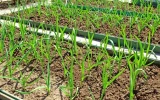How Much Space Does Garlic Need to Grow? (More Than You Think)
Despite its compact size, garlic demands a surprising amount of space to grow effectively. This requirement highlights the significance of proper garden planning for achieving optimal air circulation and nutrient distribution, essential for the healthy development of garlic. In this article, we will dive into the specific spatial requirements necessary for cultivating garlic.
Garlic requires about 6 inches of space between each clove for optimal growth. This spacing allows sufficient room for bulb development and reduces competition for nutrients and water, ensuring healthy, large garlic bulbs. Planting too closely can result in smaller bulbs.
If you plant garlic cloves too far apart, you'll waste space and might end up with more weeds. Let's find out the best way to space them so you can grow more garlic and keep your garden neat and productive.
Summary
- Different garlic varieties require specific spacing to thrive, with hardneck varieties needing at least 6 inches between cloves and softneck varieties allowing for slightly closer spacing of 4–6 inches.
- Raised beds allow for efficient use of space with a recommended clove spacing of about 6 inches apart in all directions.
- Garlic planted in containers should be at least 12 inches deep with sufficient diameter for the number of bulbs planted, promoting healthy root development and easier plant care.
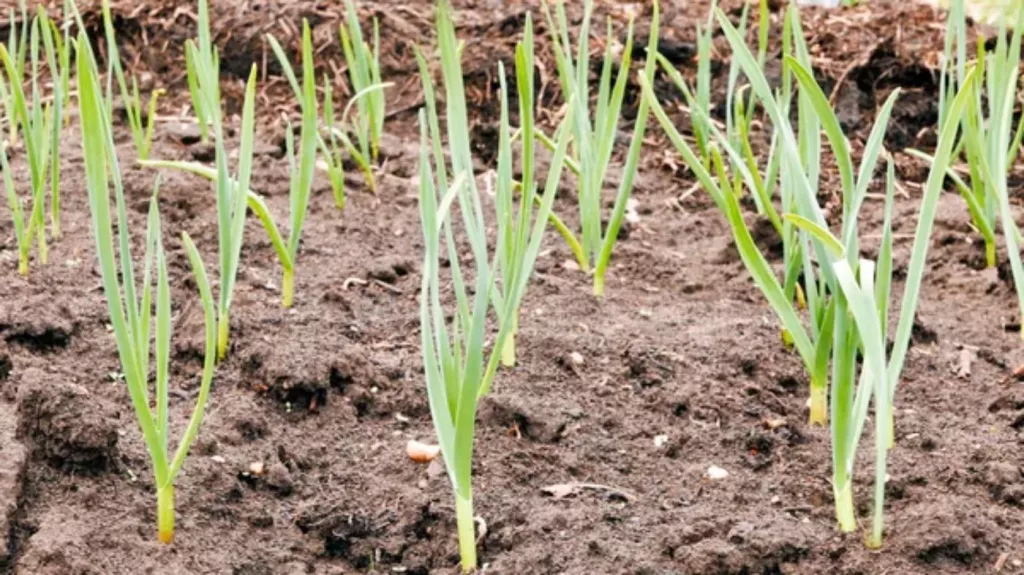
On this page:
Spacing for Different Garlic Varieties
Different varieties of garlic, including hardneck, softneck, elephant garlic, and subvarieties like rocambole, porcelain, artichoke varieties, and silverskin, have unique spacing needs.
| Garlic Variety | Clove Spacing | Row Spacing |
|---|---|---|
| Hardneck | At least 6 inches | 8–12 inches |
| Softneck | 4–6 inches | 8–12 inches |
| Elephant garlic | 8–10 inches | 12–18 inches |
For hardneck garlic, which encompasses varieties like Rocambole and Porcelain, you should aim for at least 6 inches apart in rows spaced 8–12 inches apart. These varieties thrive with a bit more room due to their larger stalk and bulb size.
Softneck garlic, which includes Artichoke and Silverskin types, can be slightly closer together, typically around 4–6 inches between each clove. The rows can also be spaced about 8–12 inches apart. This type is more likely to be what you find in your local grocery store.
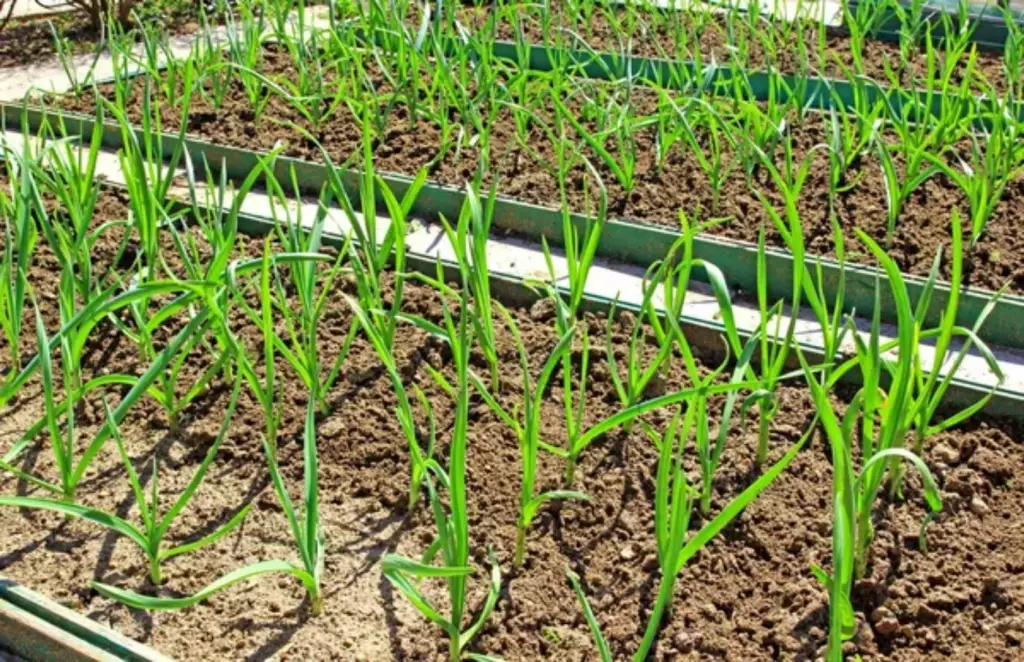
If you're venturing into elephant garlic, though it's not a true garlic but a leek, it's significantly larger, and you’ll want to give these giants about 8–10 inches between cloves, with rows spaced 12–18 inches apart.
The right spacing ensures your garlic has access to ample sunlight, soil, water, and nutrients. This consideration helps maximize each plant's potential to produce large, flavorful bulbs.
Remember, your planting site's conditions and the specific needs of the garlic varieties you've chosen are essential for determining the best spacing.
Factors Affecting Garlic Spacing
When planting trees, perhaps consider several factors that influence how much space you’ll need between each one.
Sunlight is essential for photosynthesis, so you’d want to ensure that each tree gets enough light. Trees planted too closely can overshadow each other, leading to poor growth or even death of some branches.
Soil quality affects root expansion. Good soil allows roots to spread out for water and nutrients. If soil conditions are poor, you might need to give trees more space, so they don’t compete too fiercely for these essentials.
Your site's layout also matters. A tree's mature size influences how much room it needs. Make sure you know the expected width and height before you plant, to prevent crowding.
- Proper spacing requirements:
- Allows adequate sunlight for all trees
- Supports healthy soil structure
- Ensures enough water and nutrients for each tree
- Accommodates site characteristics and tree size
Always pay attention to the specific needs of your tree species, as each has its requirements for optimal growth.
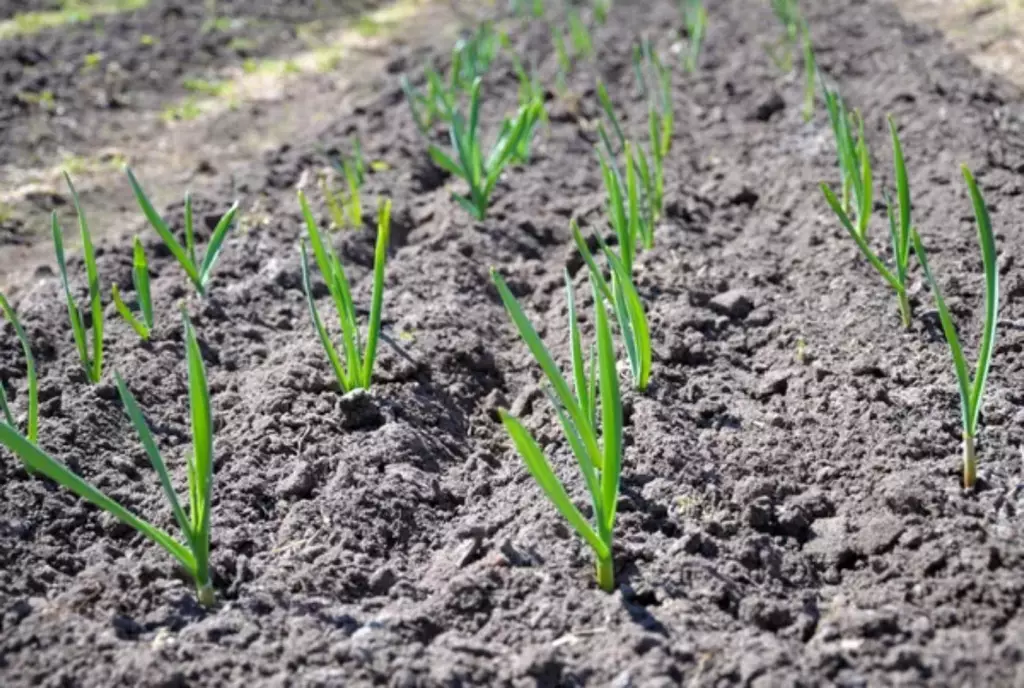
Additional Considerations Regarding Garlic Spacing
When growing garlic, you also need to consider the type of container, the benefits of companion planting, and the best methods for storing your garlic after harvest.
Growing garlic in containers
If your space is limited, growing garlic in containers is a viable option. Choose pots that are at least 12 inches deep and have adequate drainage to prevent waterlogged soil.
Fill your pots with a potting mix designed for vegetables, ensuring it's loose enough to promote good bulb development. Place the pots in an area where they will receive plenty of sunlight and maintain consistent moisture without becoming soggy.
For varieties like 'Chesnok Red', the individual bulbs benefit from being planted in a container that can accommodate their size.
Companion planting
Companion planting can greatly enhance your garlic's growth. Planting garlic near carrots or leeks can help repel pests that would otherwise harm your crop.
Keep in mind that garlic should not be planted too close to peas or beans, as it can inhibit their growth. Introducing onions into the mix can create a diverse environment that wards off many common pests while maximizing your garden space.
Storing and preserving
Once your garlic bulbs are mature, proper storage is key to preserving their flavor. After harvesting, allow the bulbs to dry in a dark, well-ventilated place with low humidity.
Once they are dry, you can braid the stems for a decorative and functional storage method, which also promotes good air circulation.
For smaller bulbs or individual cloves, consider using mesh bags or baskets. These storage methods can keep your garlic fresh for several months when stored properly. Learn more about post-harvest garlic handling in this article.

Garlic Spacing in Raised Beds
The optimal spacing for garlic cloves in raised beds is generally about 6 inches (15 cm) apart in all directions. This means that each garlic plant should have a space of 6 inches around it to ensure adequate room for growth.
For raised beds, planting in rows can maximize space efficiency, with rows spaced 6 to 8 inches (15 to 20 cm) apart. This spacing allows for good air circulation around the plants, reduces competition for nutrients and water, and minimizes the risk of disease spread.
Advantages of planting garlic in raised beds
-
Spacing: Raised beds typically allow for slightly wider spacing, with garlic cloves planted about 6 inches (15 cm) apart in all directions. This is due to the improved soil conditions and drainage in raised beds, which can support healthier root development and plant growth even with increased spacing.
-
Soil quality: Raised beds offer the advantage of being filled with a custom soil mix, which is often richer in organic matter and has better drainage than native garden soil. This can support denser planting without negatively impacting plant health.
-
Improved drainage: The elevated nature of raised beds ensures better drainage, reducing the risk of root diseases associated with excess moisture. This allows for healthier plants even when spaced more closely.
-
Ease of maintenance: Raised beds make it easier to access plants for maintenance, including weeding and harvesting. This can support wider spacing by reducing the physical strain on the gardener, making it easier to care for each plant.
How Big of a Planter Do I Need for Garlic?
When you're gearing up to grow garlic in a planter, your container should be at least 6 inches deep to accommodate the garlic's root growth. For the overall planter size, aim for a pot that has a diameter of 6–8 inches for each bulb of garlic you wish to plant.
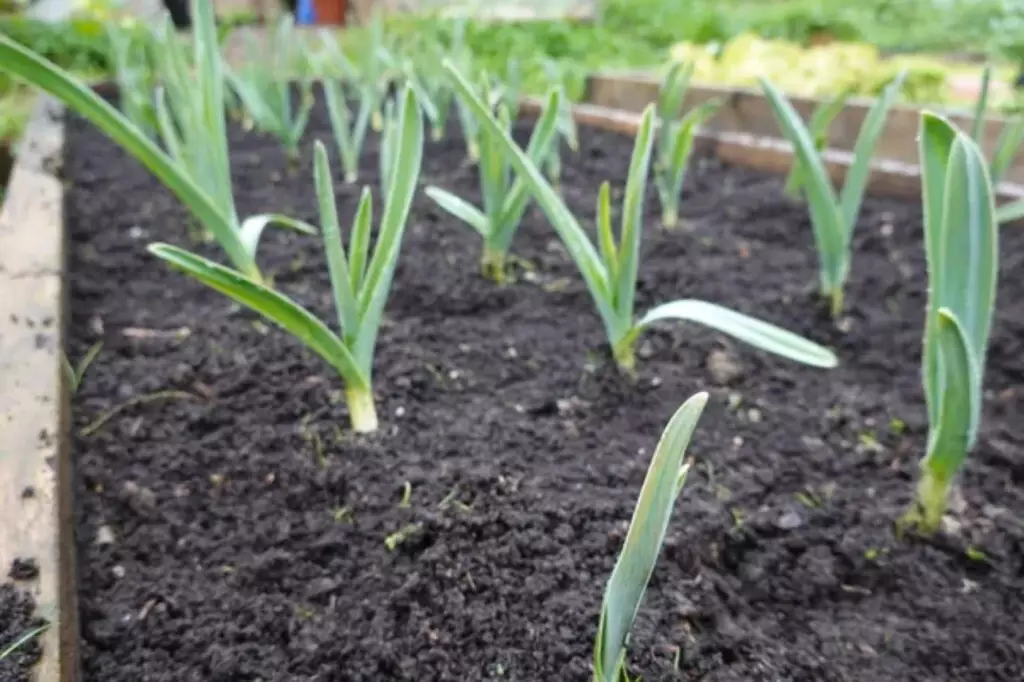
Here's a quick rundown:
- Depth: At least 6 inches.
- Width per bulb: 6–8 inches.
If you're considering multiple bulbs in one container, a larger planter is necessary. For several bulbs, go for a wide container and maintain the spacing guideline of 4–6 inches between bulbs.
For example, a planter that's 12 inches wide could hold two garlic bulbs comfortably while providing enough space for the roots to extend.
Material-wise, plastic pots are recommended because they retain moisture well. This trait is beneficial for garlic, as it needs consistent moisture levels.


